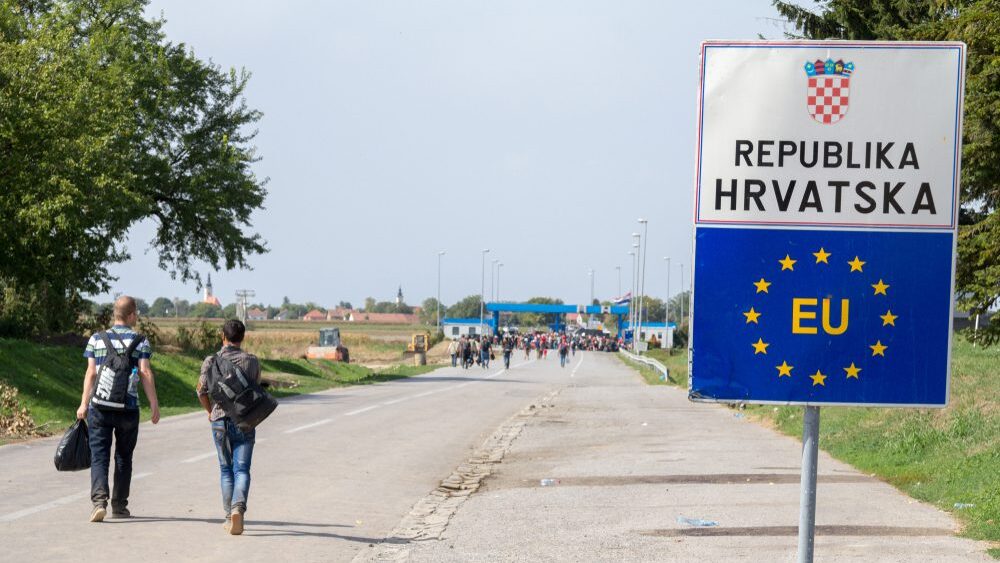
Photo: BalkansCat / Shutterstock.com
Croatia, the EU Schengen Area’s newest member, has witnessed a 140% uptick in illegal migration this year compared to last year when it was a non-Schengen member, the Head of the Border Police Directorate Zoran Niceno announced on Thursday, September 28th.
Speaking to the press, Niceno noted that over 54,500 migrants crossed the Croatian border illegally. “All of them sought asylum. That says a lot. This shows that smugglers and migrants know the European Union system well, that by giving fingerprints they know that there is little chance that they will be returned and they know that they have freedom of movement while they are in Croatia,” Niceno said, according to a report from the Croatian news portal Index.
With a population of nearly 4 million residents, Croatia formally entered the European Union’s Schengen Zone at the beginning of this year. The Schengen area is made up of 27 member states and encompasses over 400 million people who, theoretically and under normal conditions, can travel freely without any internal border controls.
The country, which has the EU’s longest external land border, spanning some 1,350 kilometers in total, was one of the main passages along the Balkan route that was used by hundreds of thousands of migrants during the crisis of 2015 and 2016.
Now, nearly a decade later, although traveled less, migrants looking to make the EU their home still make use of the route, entering Croatia’s lengthy border from neighboring Serbia or Bosnia Herzegovina. Despite the number of detections of illegal border crossings along the Balkan route being down 19% year over year, it still remains the second most frequented route, with over 70,550 detections in the January to August period of this year.
Other countries along the Balkan route have seen an uptick in illegal arrivals as well. To Croatia’s northwest, in Slovenia, the number of illegal migrant arrivals nearly tripled in the first eight months of 2023, compared to the same period last year. As a result, Slovenia days ago—just ahead of a meeting of EU interior ministers aimed at discussing ways to discourage migrants from illegally trying to enter the bloc—announced days that it would enact stricter border controls with Croatia.
Commenting on the extra police officers stationed along the main thoroughfares from Croatia to Slovenia, Interior Minister Boštjan Poklukar said: “These are not internal [border] checks. These are compensatory measures,” adding that full reintroduction of checks at the border are not being discussed at the moment. He did not rule out the possibility, however.
“I never thought that I would close the western border with Italy during my first term as interior minister, but I did during COVID-19. So never say never,” Poklukar said.
Various Schengen member states, including Austria, France, Switzerland, Germany, and Poland reintroduced inter-Schengen border controls in a bid to the surge of illegal migrants coming from North Africa via the Central Mediterranean route, which last month saw some 12,000 people arrive on the Italian island of Lampedusa in a single week.
